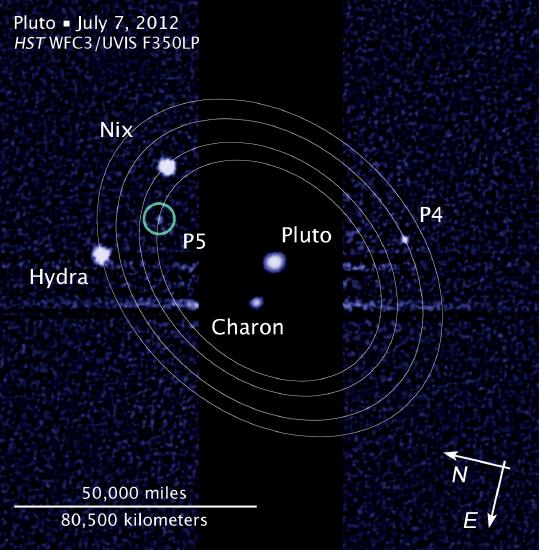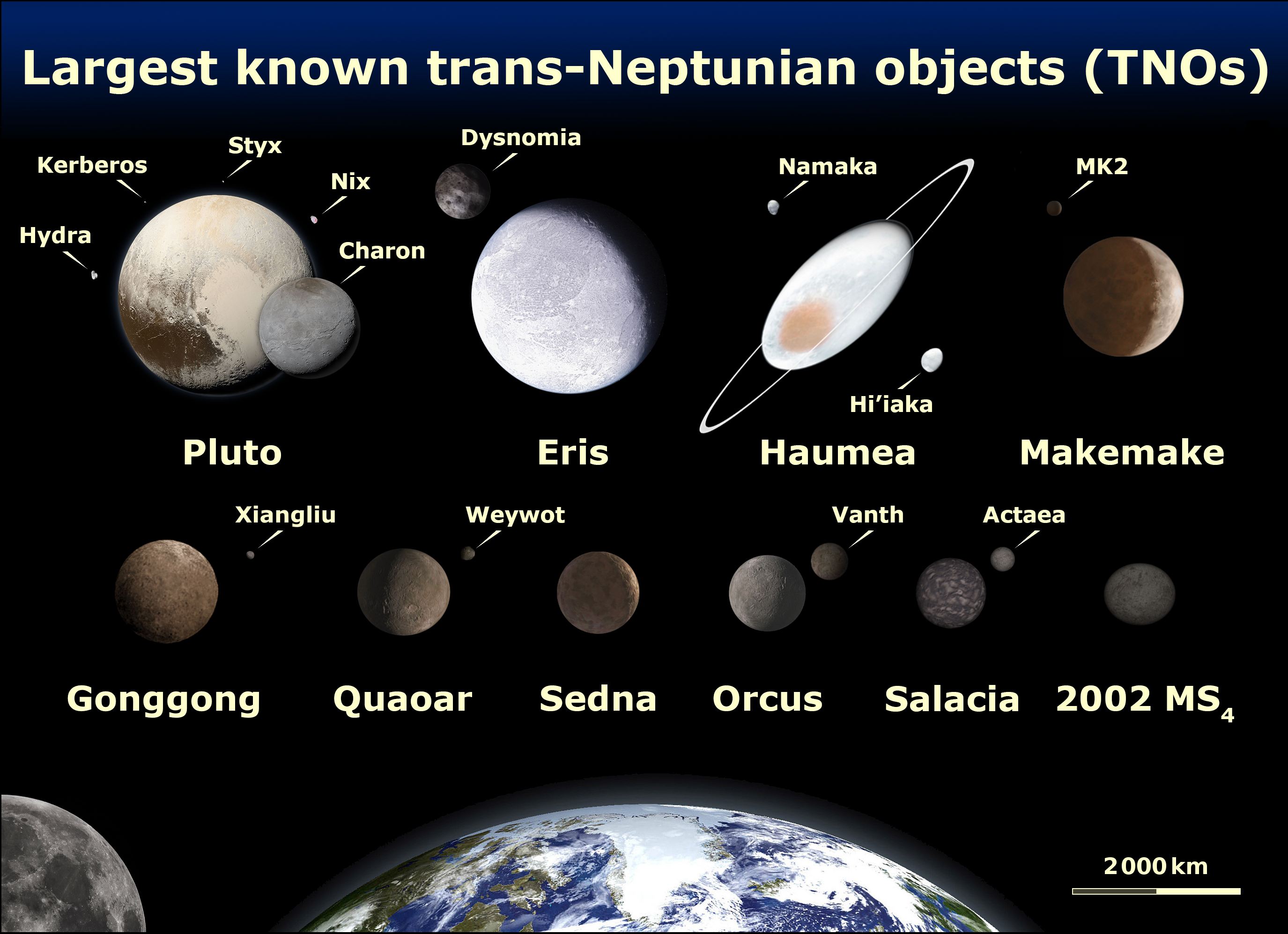12.5: Kuiper Belt Objects
( \newcommand{\kernel}{\mathrm{null}\,}\)
Pluto was discovered in 1930 by Clyde Tombaugh. Amateur astronomer Percival Lowell measured some irregularities in Neptune’s orbit and predicted that there must be a fifth Jovian planet perturbing its orbit, much like the way Neptune perturbing Uranus’ orbit. Tombaugh looked in the direct Lowell expected this world to be and found Pluto. Initially, the discovery of Pluto was hailed as confirmation of Lowell’s idea. However, it soon became apparent that Pluto was much smaller than Lowell had predicted. In fact, it is a tiny world, smaller than Mercury. Even Earth’s moon is larger.
 Pluto and its moons.
Pluto and its moons.
In the 1980s, when the Voyager 2 probe made better measurements of the masses of Uranus and Neptune, scientists determined that Lowell had been working on erroneous data. With more accurate measurements, the irregularities Lowell noted disappeared.
Pluto has five moons, the largest of which, Charon, was discovered in 1978. Charon orbits at an angle of 118º to the plane of Pluto’s orbit. It is rotationally locked to Pluto, and about a sixth as large. Pluto is also locked to Charon, forming an almost double planetary system where both bodies always face the same sides to each other. The other four smaller moons of Pluto are named Nix, Hydra, Styx, and Kerberos.
Despite its small size and being different than any of the outer Jovian planets, astronomers accepted Pluto as the ninth planet for decades. Pluto has an icy composition like a comet or one of the medium-sized moons of the Jovian planets. It also has a very elliptical, inclined orbit. Overall, Pluto has more in common with comets than with the eight major planets. Pluto could be considered a double-planet system as Charon is nearly as large as Pluto itself and was probably made by a major impact.
The temperature on Pluto is very cold, around 40 K. Pluto has a thin nitrogen atmosphere that will refreeze onto the surface as Pluto’s orbit takes it farther from the Sun.
New Horizons has revealed a surprisingly active geology. Pluto’s surface consists of large areas of water ice and slushy regions of frozen nitrogen.
.jpg?revision=1&size=bestfit&width=554&height=312) New Horizons over Pluto.
New Horizons over Pluto.
https:/commons.wikimedia.org/wiki/File:New_Horizons_over_Pluto_(17620333413).jpg;
For decades, astronomers assumed that Pluto orbited the Sun alone, just like the other planets. Then, starting the 1990s, astronomers discovered other objects orbiting in the region now known as the Kuiper Belt. Eris, a body slightly larger than Pluto, was discovered in 2005. Now, more 1200 have been found. Eris even has a moon named Dysnomia. Others include Makemake and Haumea.
Facing the dilemma of whether we should call are 1200 Kuiper Belt objects as planets, the The International Astronomical Union (IAU) created a new classification called dwarf planets. Unlike true planets, dwarf planets have not cleared most other objects from their orbital paths. Pluto received a demotion from planet to dwarf planet. Scientists also refer to Kuiper Belt objects as trans-Neptunian objects or plutoids.
 https://commons.wikimedia.org/wiki/File:EightTNOs.png
https://commons.wikimedia.org/wiki/File:EightTNOs.png





